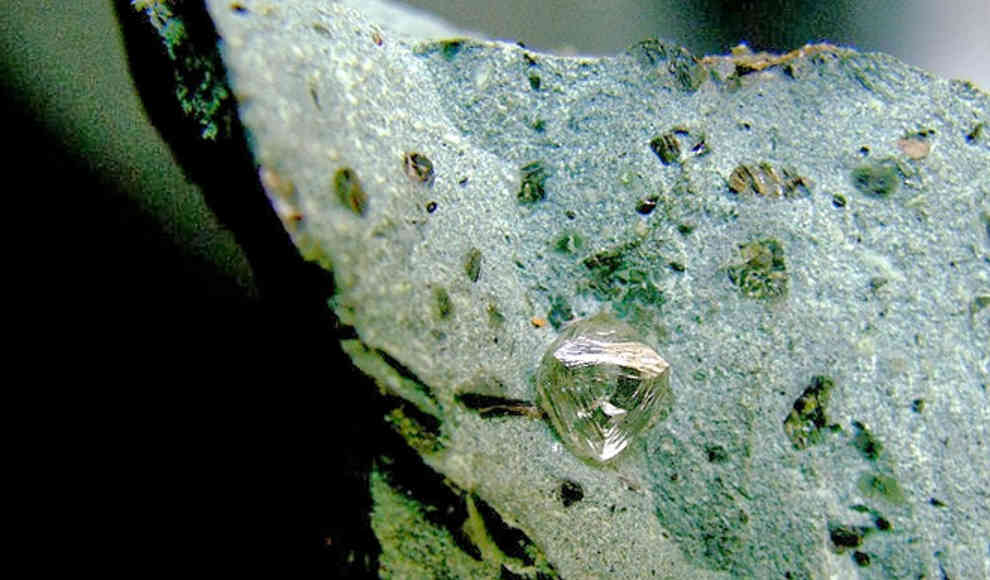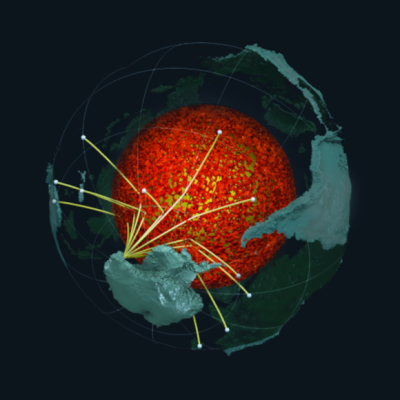Researchers have discovered Kimberlite rock beneath the ice of the East Antarctic. Kimberlite is often associated with raw diamonds. However, the Antarctic Treaty protects the icy world from mineral exploitation, so there will be no diamonds from the South Pole for now.
Diamonds are a rare and coveted resource, even though they are made up of pure carbon. They are formed under high pressure and heat, which forces carbon atoms into a compact lattice structure, making diamonds one of the hardest materials on Earth. The exceptional conditions that form diamonds from carbon are only found deep in the Earth’s mantle, where temperatures exceed 1,000 degrees Celsius and pressure reaches several thousand atmospheres. Volcanoes that run along the plate boundaries of old continents transported diamonds and molten rock to the surface. The volcanic pipes cooled more than 100 million years ago and now form Kimberlite, the rock from which raw diamonds are extracted.
Gregory Yaxley from the Australian National University explains that Kimberlite and related rocks are found on all continents, especially those that emerged from the ancient continent of Gondwana – Africa, India, South America, and Australia. The exception is Antarctica, which also emerged when the ancient continent broke apart, but no Kimberlite has been found until now. Yaxley and his research colleagues took rock samples from different locations along the Prince Charles Mountains in East Antarctica and analyzed them. The mountain range extends more than 400 kilometers north-south and is bounded on the east by the Lambert Glacier. In the southern part of the Prince Charles Mountains, the researchers discovered 120 million-year-old Kimberlite rock, which appears to extend about 150 kilometers along the Lambert Graben. The Kimberlite samples found there are typical of classic Kimberlite in terms of texture, mineralogy, and geochemical composition, as found on other continents.
Although the discovery of Kimberlite rock in Antarctica is the first evidence of potential diamond-bearing rocks, the exploitation of diamond seekers and corporations is not a concern for Antarctica for now. The Madrid Protocol of the Antarctic Treaty protects the southern continent from the exploitation of mineral resources until 2041.










